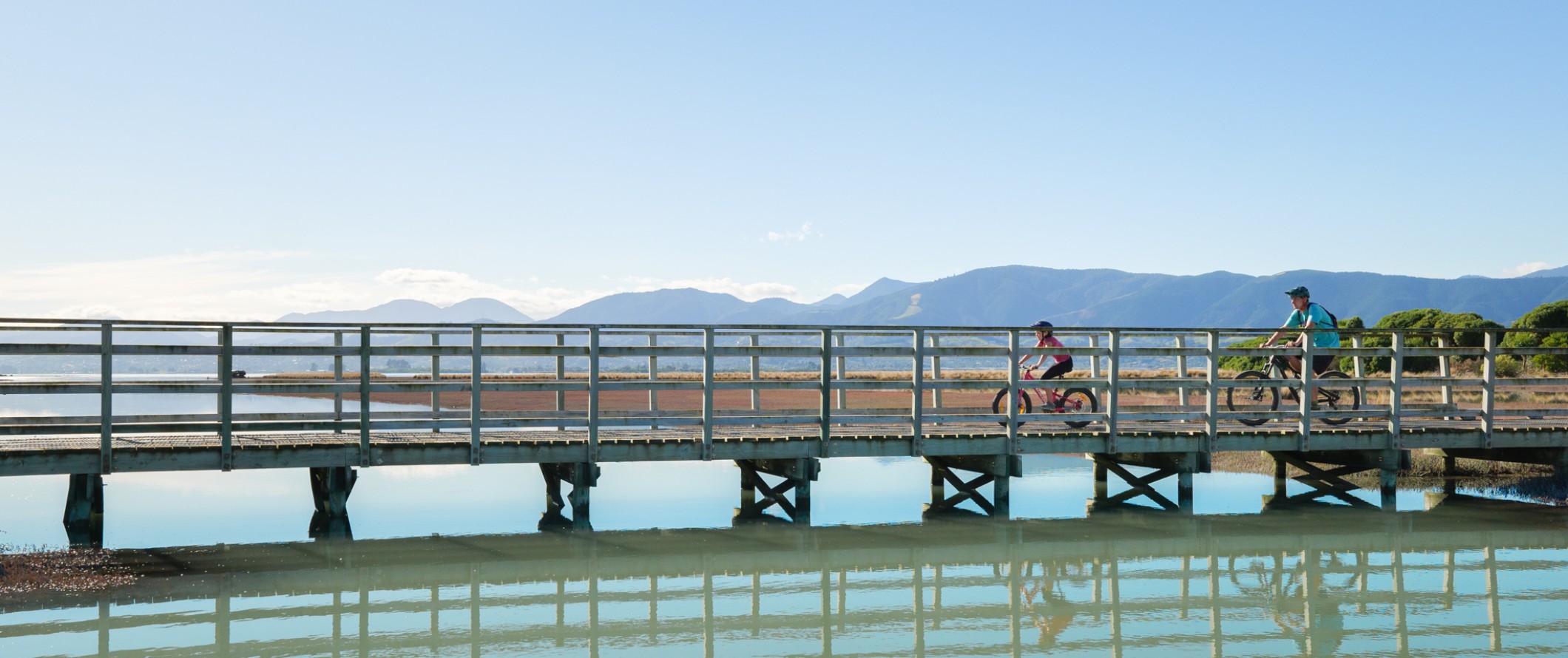International jetsetters of Waimea Inlet
The Waimea Inlet is an internationally important coastal wetland for migratory birds. Wading birds can best be spotted from the cycle trail at low tide.
Possibly our most famous bird is the bar tailed godwit, traveling 11,000km non-stop from Alaska to the Inlet each year to feed.
Shallow tidal flats, rich in worms, shellfish, and other invertebrates, provide a vital food source for the birds.
The Waimea Inlet is the largest semi-enclosed estuary in the South Island, with 10 islands within the inlet, giving the birds space and some protection from predators.
But like so many vulnerable natural areas, the Inlet is under threat from pollution, silt build up, introduced pest species, development, and other human activity at the margins.
A 1990 bird count recorded over 50 species of birds. Sadly, many of these are now declining or seriously endangered. These birds include (and its Māori name):
- Wrybill (ngutu-parore)
- bar-tailed godwit (kuaka)
- white heron (kōtuku)
- royal spoonbill (kōtuku-ngutupapa)
- little egret
- Australasian bittern (Matuku-hūrepo)
- banded rail (moho pererū)
- black billed gull (tarāpuka)
- black fronted tern (Tarapirohe)
- blue penquin (kororā)
- pied oyster catcher (tōrea)
- pied and black shag (kāruhiruhi and kawau pū)
See more here about the godwits' migration route.




